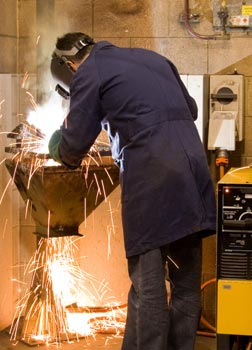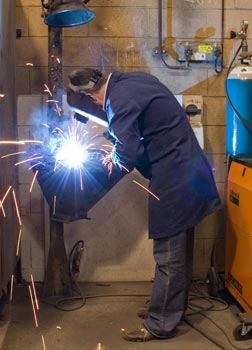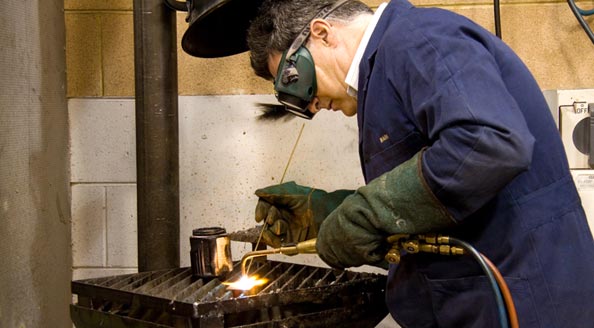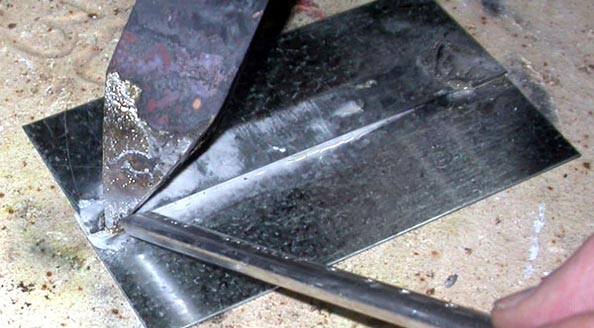Joining techniques
Heat joining
There are a variety of heat methods used for joining together metal. The methods available are:
- arc or MIG welding
- brazing and silver soldering
- soft soldering.
The type and thickness of metal to be joined will determine which method would be used. A general guide to which method for which material is as follows.

Arc welding
Electric welding (arc or MIG)
The arc and MIG welding process fuses metal together by heating it with an electric current.
Arc welders use flux coated electrodes and can be used for welding mild steel from about 2mm thickness and up. Maximum material thickness depends on the size and quality of the welder and the size of electrodes. Arc welding is not suitable for thicknesses below 2mm, as the material melts away. A disadvantage of arc welding is the need to continually stop and change electrodes as they melt away.

MIG welding
MIG welding can be used for a range of materials including mild steel, aluminium and stainless steel from 1mm in thickness. MIG uses a continuous wire feed electrode enabling non-stop welding. A shielding gas (argon carbon dioxide mix) is fed through the handpiece eliminating the need for flux on the electrode. A disadvantage of the shielding gas is that MIG welding cannot be done in windy conditions.
Brazing and silver soldering
Brazing refers to welding/joining with the use of a heating flame combined with a flux coated bronze rod. The metals that are being joined are not melted in a brazing process. The rod melts and sticks (brazes) the two pieces of metal together. Pieces that are being joined must overlap. Braising cannot be used for butt welding.
Hard soldering, or silver soldering, is similar to the brazing process except that the rod is an alloy of silver and copper. Silver soldering rods are expensive. Silver soldering uses a capillary action in that the melted rod seeps into and fills the gap between the two surfaces being joined. This method is often used by plumbers to join copper pipe.
Materials that can be joined by these two processes include bronze, copper and mild steel. Material thickness can be from 1mm up, depending on the size of the gas tip and the rod.

Brazing
Soft soldering
Soft soldering refers to the process of melting a solder compound using a relatively low amount of heat (compared to brazing and welding) from a hot iron. The solder material is an alloy of lead and tin which also needs to be used in conjunction with a flux. Lead free versions of solder material are available and may contain tin, copper, silver, bismuth, indium, zinc, antimony. Soft soldering is used for jointing copper, brass and tin or galvanised sheet metals. Materials being joined must be very clean.
When you solder together copper wire, you are soft soldering.

Soft soldering



